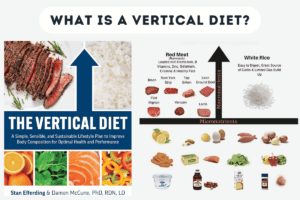Carbohydrates are an essential nutrient that primarily supplies the brain and body with energy. Carbohydrates can be used immediately or stored in the muscles and liver as glycogen, a starch that maintains blood sugar levels. They are found in animals and plants and are made up of carbon, hydrogen, and oxygen. It’s very important to choose the right source of carbohydrates to manage your blood sugar and insulin levels and prevent constipation and digestive problems.
In this article, I will share my knowledge about carbohydrates with you. We will speak about the structure of carbohydrates (what types of carbohydrates there are), why fiber in our diet is so important, and what the Glycemic Index and Glycemic Load are. Also, we’ll discuss carbohydrate requirements and how to make more healthy carbohydrate choices. Now, let’s start from the basics and look at the structure of carbohydrates.
The structure of carbohydrates
Carbohydrates are generally classified into simple carbohydrates (sugary carbohydrates) and complex carbohydrates (starchy carbohydrates). The sugary carbohydrates are made up of tiny molecules consisting of between one and approximately 10 sugar units, whereas starchy carbohydrates are made up of hundreds of sugar units joined together.

Sugary carbohydrates. If sugary carbohydrates are made up of just one sugar unit, then it is known as a monosaccharide. Examples include the glucose in fruit and honey, the fructose in fruit and vegetables and the galactose in milk. Monosaccharides can also link together to form disaccharides. A disaccharide is two molecules of sugar that have bonded together to form one new, larger molecule. The primary forms of disaccharides are maltose, sucrose, and lactose.
Sugary carbohydrates occur in fruits, some vegetables, milk, and dairy products. They are also present in processed and manufactured foods. We should choose fruits and vegetables that are not juiced and unsweetened dairy products from foods that contain sugary carbohydrates. On the other hand, we should limit our sugary carbohydrates in processed and manufactured foods, juiced fruit, and vegetables. The sugars found in these products are known as non-milk extrinsic sugars.
An intrinsic sugar is still contained in the plant cell, while an extrinsic sugar is not. So, for example, a fruit that has not been juiced still contains its intrinsic sugars. These are the sugars that you should choose as part of your diet. However, once it has been juiced, its sugars are no longer an intrinsic part of the plant cells and become extrinsic. There are two sorts of extrinsic sugar. The first sort occurs in milk and dairy products, called extrinsic milk sugar. The second type occurs in honey, fruit juices and manufactured or processed food and drinks, such as sweets and cakes, and is called non-milk extrinsic sugar. They are also commonly referred to as free sugars. We should be aware of these sugars and limit as much as possible in our daily diet.
Starchy carbohydrates. Starchy carbohydrates (polysaccharides) can be subdivided into starch and non-starch polysaccharides (NSP – also known as fiber). There are two types of starchy polysaccharides: resistant starchy polysaccharides and digestible starchy polysaccharides. Resistant starch, also known as amylose, is a carbohydrate resistant to digestion in the stomach and small intestine due to its long, unbranched chemical structure. It, therefore, passes into the large intestine, which has many health benefits. Resistant starch is found in cereals, including corn, maize, rice, potatoes, beans, pulses, and vegetables.
Digestible starch is called amylopectin and is easily digested by enzymes in the small intestine. This is because of the many molecules branching off from the stem of its chemical structure. Amylopectin, like amylose, is found in cereals, potatoes, beans, pulses, and vegetables. Non-starch polysaccharide (fiber) is another polysaccharide. It is obtained solely from food of plant origin and plays a vital role in digestion, although it passes through the digestive tract largely undigested. NSP can either be insoluble or soluble. Soluble fiber can dissolve in water, whereas insoluble fiber cannot. Requirements of dietary fiber are shown below.
Requirements of Dietary Fiber
| Age group | Recommended intake per day (g) |
| 2-5 years | 15 |
| 5-11 years | 20 |
| 11-16 years | 25 |
| 17 years and over | 30 |
Soluble fibre helps slow digestion and absorption of other carbohydrates, such as starch and may help manage blood sugar levels. During digestion, it absorbs water and forms a gel-like mass, which may reduce cholesterol levels. Insoluble fibre does not dissolve in water and is undigested by the body. For this reason, it helps to keep the gut moving and promote regular bowel movements. This is one of the reasons it has been linked with reducing constipation and reducing the risk of bowel cancer. You can see more in the table below.
Benefits of NSP intake
| Type | Major food sources | Examples | Physiological effects |
| Insoluble NSP (insoluble fiber) | All plants, wheat, rye, fruit and vegetables | Wheat products and brown rice | Increase faecal bulk and decrease transit time |
| Soluble NSP (soluble fiber) | Fruits, vegetables, some cereals and beans | Apples, bananas, citrus fruits, carrots, barley, oats and kidney beans | Delays gastric emptying, slows down glucose absorption and can lower blood cholesterol |
Glycemic Index (GI) and glycemic load (GL)
To choose the right source of carbohydrates we also need to know what glycemic index (GL) is and what glycemic load (GL) is. The Glycemic Index is a method of classification which simply ranks foods based on how quickly the carbohydrate they contain is digested and absorbed into the bloodstream and their overall effect on blood glucose levels. Foods are given a GI number according to their effect on blood glucose levels. GI 100 is the highest ranking, meaning such food quickly increases blood sugar. Foods are grouped into three bands:
1. Low:1–55
2. Medium:56–69
3. High:70–100
So, carbohydrates that are easy to digest will usually have a high GI value. Carbohydrates that take longer to digest and be absorbed will show a far more gradual rise and fall in blood sugar levels and lower GI value. But it’s also important to understand that GI measures how this blood sugar response is seen. It is not necessarily a measure of how ‘healthy’ the carbohydrate-containing food is. Food can have low GI but have lots of fat. It’s always important to consider the overall nutrient profile of a food and not just its GI. For example, most cheeses have a GI of less than 20. Other examples are chocolate cake with a GI of 30–40 and chips with a GI of less than 55.
One more important thing about GI. Primarily, we consume composite meals from various and balanced foods and drinks. Combining these foods will affect the overall blood sugar response following a meal. If we consume all high-GI foods, it will be a high-GI meal. If we have a mix of low and high-GI foods, it will be a medium GI meal. We need to know that fibre, protein, and fat all lower the GI value of a meal.
One more thing to consider – glycemic load (GL). When foods are tested on GI, they must be weighed to contain 50 grams of carbohydrate. This allows the tests to be scientifically controlled by comparing them against the test reference that also contains 50 grams of carbohydrates. The amount of food needed to supply 50 grams of carbohydrates is often very large and is not an amount that would be realistically consumed in a meal, so the concept of glycemic load was developed.
For example, parsnips contain around 10 grams of carbohydrates per 100 grams. To test the GI, scientists use 500 grams of parsnips to ensure they have 50 grams of carbohydrate to test against 50 grams of glucose. The GI score for the 50 g carbohydrate contained in 500 g of parsnips is 97. However, most people are more likely to eat just one or two parsnips as a portion and so the impact on their blood sugar will be a lot less than the GI suggests. Despite their high GI, their glycaemic load is medium. Parsnips contain many micronutrients and can be consumed as a healthy, balanced meal. GI scores do not consider how much a person eats, whereas glycemic load does.
Carbohydrate requirements
Looking at the nutrition requirements of carbohydrates, protein, and fat (Table below), we can see that 55% of our energy needs should be dietary carbohydrates, an essential fuel for the body. From the 55% dietary carbohydrate, at least 50% should be from starchy carbohydrates, preferably wholegrain, as they provide NSP. Also, choose varieties that are low to moderate GI. Good sources are beans, pulses, wholegrain rice and pasta. Non-milk extrinsic sugars or added sugars should be limited to 5% of total energy intake. Sugars that occur naturally in whole vegetables, fruit and dairy produce do not need to be limited.
Nutrition requirements of Carbohydrate, Protein and Fat.
| DRVs for carbohydrate and fat as a percentage of energy intake | |
| % Daily Food Energy | |
| Total Carbohydrate | 50-55% |
| of which free sugars | Not more than 5% |
| Protein | 10-15% |
| Total Fat | Not more than 35% |
| of which Saturated Fat | Not more than 11% |
Total carbohydrate includes all starch, sugars, and dietary fiber. Free sugars are sugars added to foods and drinks by the manufacturer, cook or consumer, plus sugars naturally present in honey, syrups, and fruit juice. Total fat includes all saturated and unsaturated fat (mono- and polyunsaturated).
Although the Department of Health recommends an intake of 50-55% there is much disagreement about what an ideal carbohydrate intake is. Some population groups may benefit from a lower or higher carbohydrate intake. For example, many athletes choose to have a carbohydrate intake as high as 70% as that level aids their performance and recovery. On the other hand, those who are predominantly sedentary, or who are insulin-resistant, may benefit from less carbohydrate. More about carbohydrates for athletes, you ca n read in my article: “The importance of carbohydrates for sports performance”.
How do you choose the right source of carbohydrates?
Here are three broad guidelines that will help you ensure that your diet is based on the healthiest carbohydrate sources:
- Avoid non-milk extrinsic sugars. These sugars can cause your blood sugar levels to fluctuate and are linked with poor appetite control and tooth decay. To achieve this, you should avoid foods with added sugar, such as soft drinks, confectionary, breakfast cereals and ready meals. You should also limit the amount of fruit juice and smoothies to no more than 150 ml, or a small glass, a day.
- Choose starchy foods that are high in fibre and have a low glycemic index (GI) and glycemic load (GL). Include plenty of vegetables and fruit.
- Include a source of protein in the meal. Including protein in a meal can help to lower the overall GI of the meal by slowing down the digestive process.
- Include at least one low-GI food. Including at least one low-GI food in your meal lowers the overall GI value even if high or medium GI foods are included. The lower GI foods it includes, the better.
- Include foods rich in fibre. Including foods rich in fibre, such as wholegrain, slows down the digestive process, slowing down the glycaemic response.




